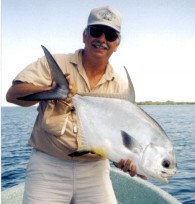by Bill Kiene
This is an important part of the sport. You need to get a fly rod(s) that will fit your personal needs and casting style. This fly rod is for you, not for the fly shop salesperson or your fishing partner. You need to pick the right line size, length, number on sections and action of this new fly rod so it will perform well for you.
Rod Line Size
The rod line size has more to do with the size of the fly or flies or combination of terminal tackle (indicators, split shot) you will be casting. Fly lines come from size # 0 all the way up the # 16. These line sizes are directly related to the weight of the first 30′ of the fly line and they get larger in diameter and heavier as the line numbers get larger. The most popular sizes for trout are # 4, 5 and 6 line rods. The # 4 line is for casting smaller flies ( # 14 to # 20) with lighter tippets (5x to 7x) on small streams or on the smooth water that is found on spring creeks (slow moving streams with little or no riffles). The #5 line is the most popular size today for trout because it fits most situations fairly well for casting a wide range of flies (# 8 to # 16). The # 6 line is for casting larger trout flies like the ones used in lakes or on larger streams. The # 6 line is also popular because it starts to bridge the gap to some larger fisheries like bass, steelhead and shad. The next most popular group is # 7, 8 and 9 lines. They are for heavy fresh water and light salt-water fisheries. Of these sizes the #8 is the ‘top dog’. It is popular for steelhead, shad, stripers, salmon, bonefish and many other medium size fish. These lines will throw larger flies in windy situations that are commonly found on larger rivers, bays and along the coasts. The largest popular group is the #10, 11 and 12 lines that are used for mostly salt-water fisheries. These are lines for throwing large streamers and poppers in the open, windy salt-water settings where you find great game fish like the tarpon, dorado and sail fish. These line sizes are getting more popular today with the new salt-water fly-fishing craze. Sales on lines smaller than #3 or larger than #12 are very rare in today’s market but these sizes can be useful in special situations.
Rod Length
I would guess that about 70% of the fly rods sold today are 9′ in length. This is a good size for most all situations. Shorter rods from 8′ to 8’6″ are great for smaller streams where casting distances are short and accuracy is a plus. These shorter rods are also lighter and lot of fun for catching smaller fish. If you are wading in larger rivers for steelhead or float tubing in lakes you might like a longer rod from 9’6″ to 10′ in length. You have to be careful when going to the longer lengths because not all longer rods are enjoyable to cast.
Number of Sections
The standard number of sections for many years was only two. Multi-piece rods of the past were heavy and had inferior actions so they were used primarily for backpacking. Today this is changing very rapidly with new space age composites and new rod building technology. Multi-piece rods in 3, 4, 5 and 6 pieces are taking over the market especially in the more expensive rods. The technology today allows the top rod manufacturers to make multi-piece rods that cast and feel like two piece rods. With all the air travel today, multi-piece rods can be the most practical way to go. They also are easier to store in your vehicle.
**Be sure to check the tightness of each ferrule after an hour or so of fly casting, especially on multi-piece rods.
Action
With so many choices today, fly rods come in many different actions. Be sure to get the right action for your fishing needs. Slow action, softer rods work well for short to medium casting on small water. They also balance better with smaller fish that inhabit these small streams. A softer rod will help protect the tippet from breaking on larger active fish too. Softer, slow action rods work well in short, but are hard to cast long distances for most. Medium action is best for all around fishing. This is the safest action to be looking at because it performs well in most situations. Faster action, stiffer rods are good for distance casting on open water and casting in windy situations. They don’t cast well in close so they are not normally suited for smaller stream fishing.
Price
We are lucky today that even low end rods around $100 can give great performance. Today there are lots of choices from $100 to $700. When you spend more money, you get better materials and newer technology. Whether you buy a rod for $100 or $700, you should try to get some help in picking it. I recommend casting some rods unless you are brand new to the sport, then you have to have some faith in the salesperson at the shop or take a friend who is more familiar with fly casting with you. They will generally be able to pick you a good rod in what ever price range you want.
Feel free to email or call me or my fly shop for any help.
Bill Kiene
1-800-400-0359 toll free USA


